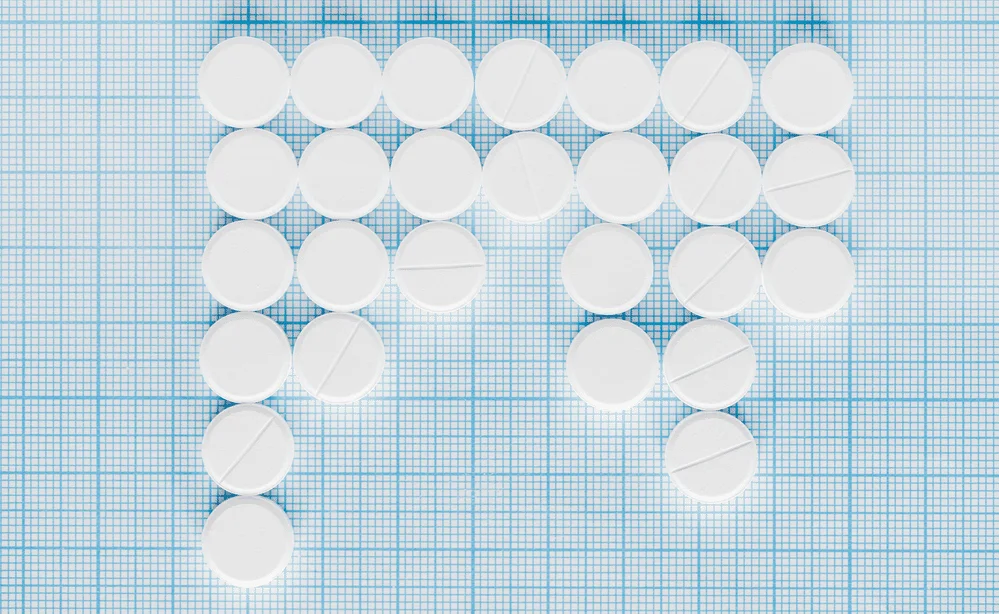In recent years, modafinil has gone from a prescription medication for sleep disorders to a topic of interest among fitness enthusiasts seeking mental resilience during training. But can a compound designed to promote wakefulness genuinely enhance physical performance? What happens when a cognitive enhancer enters the gym? And does it help—or pose hidden risks?
Now here’s the big question: Is popping modafinil and working out safe? Whether you’re a recreational lifter, an endurance athlete, or someone exploring performance optimization, this guide provides a clear overview of what modafinil does in the context of exercise, along with its benefits, side effects, and contraindications. Let’s dive in.
What Is Modafinil?
Modafinil is a wakefulness-promoting medication first developed in France in the late 1970s by Lafon Laboratories. It originated from adrafinil, a compound observed to improve alertness in animal studies. Researchers later discovered that adrafinil is metabolized into modafinil in the liver, leading to the development of modafinil as a more direct and better-tolerated alternative.
By the 1990s, it was marketed in France under the brand name Modiodal. In 1998, the U.S. Food and Drug Administration (FDA) approved it as Provigil for the treatment of narcolepsy, with subsequent approvals for obstructive sleep apnea (OSA) and shift work sleep disorder (SWSD) [1].
Clinicians have since prescribed it off-label for conditions including attention-deficit hyperactivity disorder (ADHD), multiple sclerosis-related fatigue, jet lag, cocaine dependence, cancer-related fatigue, chronic fatigue syndrome, and depression, among other health conditions [2].
Unlike classical stimulants such as amphetamine or methylphenidate, modafinil has a more selective mechanism of action. It primarily inhibits the dopamine transporter (DAT), increasing extracellular dopamine levels. It also modulates orexin, histamine, glutamate, and GABA systems—collectively enhancing wakefulness and executive function without causing significant euphoria or cardiovascular stimulation.
These effects preferentially engage the prefrontal cortex, improving attention, planning & decision-making, working memory, cognitive flexibility, and motivation—especially during prolonged mental effort or fatigue [3].
What Is a Workout?
A workout is a structured and purposeful form of physical activity designed to improve fitness, strength, endurance, flexibility, or overall well-being. An effective workout deliberately applies physical stress to the body’s muscular, cardiovascular, and neurological systems to stimulate adaptation and enhance performance over time.
Workouts typically fall into three main categories:
- resistance training: Exercises that apply tension to muscles—such as weightlifting or bodyweight movements—to build strength and muscle mass;
- cardiovascular (aerobic) exercise: Sustained activities like running, cycling, or swimming that challenge the heart and lungs to improve endurance;
- flexibility and mobility training: Practices such as stretching or yoga that maintain joint range of motion and help prevent injury.
The goal of a workout extends beyond movement alone. It’s about triggering a cycle of stress, recovery, and adaptation—enabling the body to become stronger, more efficient, and more resilient. This process occurs not only in muscles but also in the nervous system, enhancing coordination, motor control, and energy efficiency.
Regular physical activity also supports brain health. It helps maintain sharper learning, thinking, and decision-making skills as we age, reduces the risk of depression and anxiety, and promotes better sleep [4].
Importantly, a workout isn’t just a physical challenge—it’s a mental one, too. Sustaining effort, especially under fatigue, demands focus, discipline, and motivation. These cognitive demands engage the prefrontal cortex—the brain region responsible for executive functions such as planning, impulse control, problem-solving, and sustained attention [5].
This area integrates signals from across the brain to help you stay goal-directed, override distractions, and persevere through discomfort. Impairment in this region can lead to impulsivity, poor judgment, and reduced self-regulation.
This mental dimension of exercise is where cognitive enhancers like modafinil sometimes enter the conversation.
While modafinil is not a physical performance aid in the traditional sense, it may support workout consistency and intensity by enhancing alertness, motivation, and mental endurance—particularly in individuals experiencing fatigue or reduced focus.
The underlying idea is straightforward: when the mind stays engaged, the body is more likely to follow through.
Main Info About Modafinil and Exercise
What actually changes when you take modafinil before you train? In simple terms, modafinil doesn’t make your muscles bigger or your lungs more efficient; it alters how your brain experiences effort, alertness, and motivation.
That mental shift can let some people push a little longer or stay locked into technique, but clinical evidence shows this gain comes with measurable physiological costs. For example, controlled trials found modest improvements in high-intensity endurance—participants on modafinil reached exhaustion later and reported lower ratings of perceived exertion—and reviews document faster reaction time and sharper attention that plausibly aid technical performance [6].
Conversely, a study measured higher core (rectal) temperature during sustained wakefulness and exercise when subjects received modafinil, indicating an added thermal burden that makes training in heat or humidity riskier [7]. Besides, modafinil leads to a modest increase in heart rate and possible blood-pressure effects, meaning the same workout imposes a higher cardiovascular load than it would without the drug.
Ultimately, modafinil improves alertness, shortens reaction time, and can lower perceived exertion in specific high-stress tests, but those gains are modest and context-dependent; they’re strongest under sleep deprivation or near-maximal endurance tasks and often disappear in routine, well-rested training.
One of the clearest lab findings is modest endurance improvement in certain protocols. For example, cyclists given modafinil in a controlled study reached exhaustion later than when they took a placebo, a difference tied to central nervous system arousal rather than any direct muscular change.
Put bluntly, the drug helps you feel able to continue, not that your muscles are suddenly more powerful. That explains why time-to-failure improvements are measurable in tightly controlled tests but don’t translate to obvious gains across all training types [6].
Closely related is the effect on perceived effort and cognition. The med offers faster reaction times, alongside improvements in attention and certain executive functions [8]. Importantly, trials report that users do not typically become unrealistically overconfident about their performance—the drug sharpens awareness while dampening the sensation of fatigue.
This is the reason why athletes sometimes report clearer pacing or better technical execution while medicated.
On the physiological side, the research flags two safety-relevant effects. First, modafinil tends to raise core body temperature and blunt some normal cooling responses during prolonged activity in warm environments—meaning workouts in heat or high humidity become riskier.
Second, modafinil elevates both core temperature and cardiovascular load during exercise. In a controlled study, 10 male subjects exposed to 30°C and 50% humidity showed a 0.15–0.2°C rise in resting rectal temperature, which persisted during prolonged exercise sessions.
This elevation reflected increased heat production and reduced evaporative cooling. Additionally, modafinil raises heart rate and disturbs autonomic regulation, meaning the same workout imposes a greater cardiac strain [7].
In practical terms, think of modafinil as a perceptual and motivational tool rather than a physiological enhancer. Expect sharper focus and possibly longer endurance in very specific, high-demand scenarios (sleep deprivation, near-maximal efforts), but don’t expect extra muscle, greater oxygen delivery, or consistent performance gains in normal training.
The nootropic works to boost individual brainpower during intense fatigue. However, its benefits plateau quickly and may vanish in normal training conditions. For instance, a study found no meaningful improvement in physical performance over prolonged wakefulness during 72 hours of exercise tasks [9].
Above all, modafinil should never replace the fundamentals: sleep, progressive training, nutrition, and sensible recovery.
What Are the Benefits of Modafinil for Workouts?
Among the most widely discussed effects of modafinil in fitness contexts is its ability to sharpen mental focus and prolong motivation. By influencing dopamine and norepinephrine signaling—neurotransmitters linked to drive, attention, and reward—the drug can make workouts feel mentally smoother and more engaging.
Instead of generating extra physical energy, modafinil optimizes mental efficiency: it helps the mind stay anchored in each movement, delaying the point where fatigue would normally cloud performance. Many gym warriors find that modafinil dramatically lowers fatigue [10].
For them, this sharper focus translates to a more deliberate “mind-muscle connection.” It becomes easier to concentrate on form, contraction, and precision rather than simply pushing through repetitions.
When focus and form align, each rep tends to become more meaningful—especially in complex routines like Olympic lifting, martial arts sequences, or high-intensity circuit training. Some users report being able to refine technique by slightly lowering weights while maintaining perfect tension, turning each set into a more controlled and intentional effort.
Beyond concentration, modafinil seems to alter the perception of exertion itself. Research led by Jacobs and Bell (2004) demonstrated that cyclists given 4 mg/kg of modafinil at 85% VO₂max could maintain effort longer before exhaustion, despite working at the same physiological intensity. The key difference wasn’t stronger muscles or higher oxygen capacity—it was the reduced rating of perceived exertion (RPE) [6].
In essence, the body was just as strained, but the mind interpreted the workload as less demanding. That cognitive dissociation from fatigue allowed participants to push further than they otherwise would have.
This lowered fatigue perception can be a double-edged sword. On one hand, it empowers persistence—for example, an office worker who would normally skip evening workouts due to mental exhaustion might find it easier to stay disciplined. On the other hand, blunting of discomfort can encourage overtraining or injury if limits are ignored.
Ultimately, users often describe achieving a “flow-like” state during repetitive exercises, where focus becomes meditative and distractions vanish—yet the usual muscle burn feels strangely distant. In one Reddit post, a user described how modafinil transformed their gym sessions: “less fatigue (perception), increased focus on each rep.
Basically, every rep in every set gets 100% maximized. Feels amazing,” while others echoed enhanced mind-muscle connection, alertness, and feeling euphoric in the zone, suggesting its potential as a cognitive edge for physical training [10].
Further, modafinil may streamline training sessions by increasing efficiency, making them transition between sets more quickly, completing workouts with fewer distractions, and generally spending less idle time at the gym. The heightened sense of purpose resembles how modafinil keeps students or professionals locked into long cognitive tasks—applied here to physical performance.
However, these benefits remain perceptual and context-dependent. Modafinil doesn’t enhance muscle hypertrophy, increase oxygen delivery, or substitute proper recovery. It’s best seen as a mental endurance enhancer—a tool that reduces fatigue’s psychological weight rather than altering physical capacity. Studies confirm this distinction: the drug influences cortical arousal and motivation, not muscular output.
Taken together, modafinil’s workout benefits include stronger focus, reduced subjective fatigue, and greater workout consistency. The downside lies in its subtle ability to mask strain, which can tempt users to push beyond healthy limits.
Used responsibly and under medical supervision, it can act as a mental-performance ally—but it’s no shortcut to strength or fitness, and the physiological trade-offs, such as elevated temperature and cardiovascular strain, should not be underestimated.
Are There Side Effects and Contraindications?
Modafinil is often well-tolerated, but using it around exercise isn’t risk-free. Common side effects such as headache, nausea, dizziness, and dry mouth may seem minor, yet during training, they can impair balance, hydration, and coordination [11].
Because modafinil can blunt thirst, users often drink less water, increasing the risk of dehydration, cramps, and overheating—particularly during long or intense workouts.
Cardiovascular stress is another concern. Modafinil modestly elevates heart rate and blood pressure, adding strain when combined with heavy lifting or high-intensity intervals. For individuals with hidden hypertension or cardiac risk, this extra load can be significant.
Modafinil also interferes with thermoregulation—a small but persistent rise in core temperature and reduced cooling efficiency during exercise and sustained wakefulness, especially in warm conditions. This makes heat exhaustion or dehydration more likely during outdoor or endurance training.
Sleep disruption remains a hidden cost. Taking modafinil late in the day can delay sleep onset and shorten deep rest, impairing muscle recovery, hormone regulation, and overall adaptation. Appetite suppression adds another complication—helpful for cutting fat but counterproductive for muscle growth and recovery.
Finally, though rare, modafinil may trigger serious allergic reactions or interfere with certain medications, including hormonal contraceptives. Competitive athletes should note that modafinil is banned by the World Anti-Doping Agency [12].
In short, while modafinil may boost focus and stamina, its physiological downsides—dehydration, heat stress, heart strain, and poor recovery—can easily outweigh its benefits. For anyone experimenting with it, medical clearance and conservative use are essential.
If you’re considering modafinil around workouts, consult a clinician, start with low-risk, low-intensity sessions to learn how your body reacts, avoid training in extreme heat, and stop immediately if you notice palpitations, faintness, severe headache, or a rash.
The Verdict: Modafinil and Working Out
To conclude, can you pop modafinil and achieve great performance during a workout? Ultimately, for the average gym-goer, modafinil is not a shortcut—it’s a slippery performance illusion. Yes, it can make you feel sharper, but feeling strong and being strong aren’t the same thing. Its edge lies in mental endurance, not muscular power or aerobic capacity.
The main risk is that modafinil masks fatigue, a critical safety signal. You might push harder, but that also means risking dehydration, injury, or cardiac strain. For shift workers, long-haul travelers, or those training while sleep-deprived, medical guidance is essential before even considering it.
If your goal is to perform better, focus on fundamentals: sleep hygiene, nutrition, progressive overload, hydration, and mental discipline. The nootropic doesn’t replace these pillars—it only delays their necessity.
In short, modafinil can enhance your perception of performance, but it can’t replace authentic endurance. Train smarter, not trick your brain.
References
- PROVIGIL® (modafinil) Tablets [C-IV]. Retrieved: November 5, 2025. Accessdata.fda.gov.
- Modafinil. By Karl Greenblatt and Ninos Adams. Retrieved: November 5, 2025. Ncbi.nlm.nih.gov.
- Review of ‘smart drug’ shows modafinil does enhance cognition. Published: August 20, 2015. Ox.ac.uk.
- Benefits of Physical Activity. Published: April 24, 2024. Cdc.gov.
- Prefrontal Cortex. Retrieved: November 5, 2025. My.clevelandclinic.org.
- Effects of acute modafinil ingestion on exercise time to exhaustion. By Ira Jacobs and Douglas G. Bell. Published: June 2004. Pubmed.ncbi.nlm.nih.gov.
- Effect of modafinil on core temperature during sustained wakefulness and exercise in a warm environment. By Tom M. McLellan, Michel B. Ducharme, Frédéric Canini, et al. Published: November 2002. Pubmed.ncbi.nlm.nih.gov.
- Effects of modafinil on cognitive and meta-cognitive performance. By Joseph V Baranski, Ross Pigeau, Peter Dinich, and Ira Jacobs. Published: July 2004. Pubmed.ncbi.nlm.nih.gov.
- Effects of Modafinil and Sleep Loss on Physiological Parameters. By John S. Cuddy, Andrew R. Reinert, Kent C. Hansen, and Brent C. Ruby. Published: November 1, 2008. Academic.oup.com.
- Working out on modafinil. R/afinil/. Retrieved: November 5, 2025. Reddit.com.
- Modafinil (oral route). Retrieved: November 5, 2025. Mayoclinic.org.
- The Prohibited List. Retrieved: November 5, 2025. Wada-ama.org.










